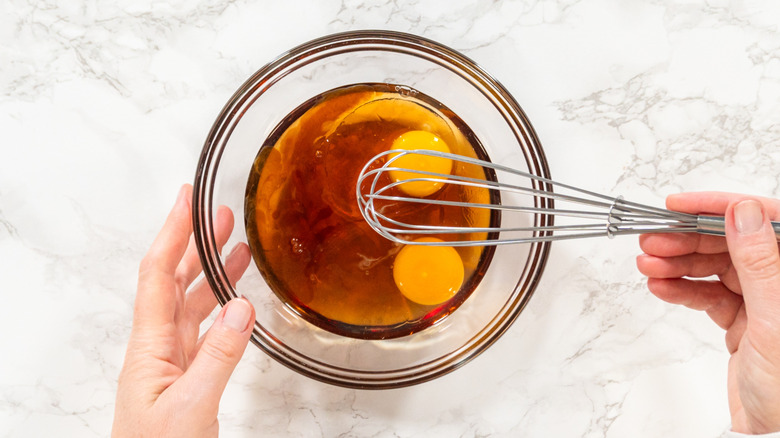Here's Why Some Eggs Have 2 Yolks
Whether you're raising backyard chickens to save yourself from high egg prices, or you purchase your eggs from the grocery store, you've likely come across a double egg yolk at least once in your lifetime — or, you will at some point. Cracking open an egg expecting the usual single yolk — only to be surprised with two — is a rare occurrence that the superstitious see as a sign of anything from abundance to death. But the cause of a double-yolked egg lies with the hen that laid it. The double yolk typically occurs in young or old hens because of how their reproductive system handles the egg-laying process.
A hen is born with all of the eggs she'll ever lay, but egg-laying only happens for a certain period of time in her life cycle. When a hen is old enough to start laying, the eggs make their way into the ovary to develop further. Since hens only have one working ovary, all eggs go to the same side. A double-yolk happens when two eggs are released at once and a shell develops around them both. Young hens with reproductive systems just getting into full swing, and older hens finishing out their last few eggs, are the most likely to produce double yolks. The likelihood of a double yolk is about one in one thousand, except in some places of the world where hens are specifically bred to produce double-yolk eggs.
Does a double yolk count as one or two eggs?
Double-yolk eggs are completely safe to eat and cook with, just like any single yolk eggs, but depending on what you're making, a double yolk can be either exciting, confusing, or both. A double yolk might take your egg sandwich to the next level, but pose a potential egg cooking mistake in a more specific recipe. When using a double-yolk egg in a recipe, pay attention to its size; it may be fine to use, but it could offer too much egg if each yolk is full-sized. A good practice is to measure your double-yolk egg by weight and compare it to the size of the egg called for in your recipe.
Small eggs should be about 1.5 ounces per egg; medium eggs are 1.75 ounces; large eggs are 2 ounces; extra large eggs are 2.25 ounces; and jumbo eggs are 2.5 ounces per egg. Keep in mind that some baking recipes call for a specific amount of egg yolk or egg white, and a double-yolk egg can be a challenge to work with in that case. It may be easier to scramble up a double-yolk egg or use it for a less complex meal while opting for different eggs for baking.

